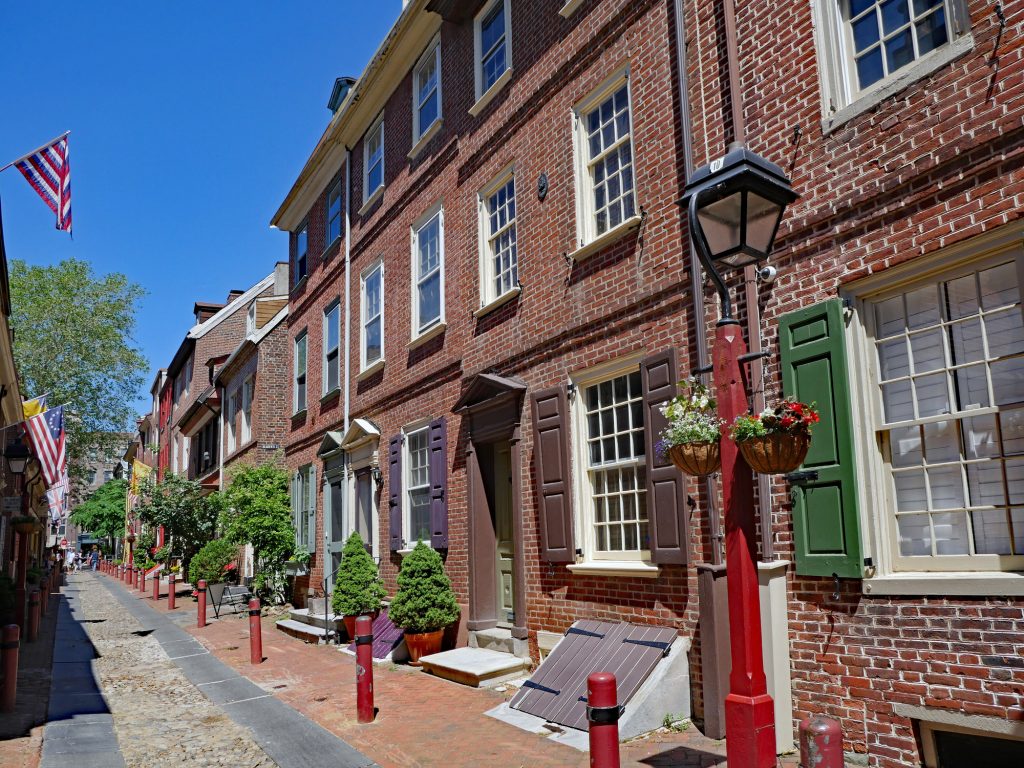Let’s explore the Pros and Cons of Leasing a Historic Building for Your Business. What Is a Historic Building? What are the advantages? What are the disadvantages?
Though America has only been a country for a couple hundred years, you can find endless well-preserved historic properties across the nation. From Victorian to Colonial Revival to Georgian, many cities and states boast gorgeous architectural styles. While most people decide to live in historic buildings, they can also work perfectly for commercial purposes.
Should you rent out a historic property to businesses in your area? There are a few ups and downs to consider. Let’s take a look.
Download Printable Article (PDF) >>>
What Is a Historic Building?
 If you’re considering an older building for commercial use, you should first note which features categorize a structure as historic. Each municipality across the country has various requirements for these buildings, including age, integrity, and significance.
If you’re considering an older building for commercial use, you should first note which features categorize a structure as historic. Each municipality across the country has various requirements for these buildings, including age, integrity, and significance.
Here are the specifics that define a historic building
-
Age: Must be around 50 years or older.
-
Integrity: Must retain its original structural integrity inside and outside.
-
Significance: Must have shaped history in some way, feature a specific architectural style, or serve as a valuable information source.
Because historic buildings are unique, you’ll want to think about their ups and downs before pursuing one for commercial reasons.
Benefits of Historic Buildings for Commercial Use
There’s no denying that historic properties are typically beautiful and well-made. These buildings have stood tall for several decades, which inherently gives them a few advantages over modern structures. Take a look.
1. They’re Made With Quality Materials
How can a building last 50 years after construction? It’s all about the maintenance — but materials matter, too. While you can still find older properties that feature downgraded supplies, you’re more likely to see the opposite when you look back to the 19th and 20th centuries.
Options like lumber, stone, and brick were constructors’ chosen materials since they were readily available and more cost-effective. These days, drywall and plasterboard have replaced them. There are evident differences in how quality has developed over time when you look at then and now.
If you’re interested in a building with top-notch bones, you may want to take the historical route.
2. They Feature Unique Architecture
Of course, historic buildings usually boast stunning architectural designs. This beauty stems from the materials used in construction, which can feature elements like stained glass. There’s an emphasis on character that you don’t often find in new structures, as well.
Today’s commercial properties tend to involve similar features. That’s not necessarily a downside, but you have a better chance to stand out from other businesses when you choose a historic property. This charm and uniqueness will resonate with customers and clients, too.
3. They Often Have More Space
For the most part, historic properties are spacious. These buildings often come with high ceilings and expansive rooms, so tenants have the freedom to spread out as much as they like. There are usually fewer walls throughout, which works well for both office and retail spaces.
Keep in mind that you may be able to charge more for rent as a result. If your area doesn’t have many spacious, unique commercial properties, you’ll have a leg up on the competition. Plus, you could potentially fit more renters within the space since you’ll have more than enough room.
4. They’re Eligible for Tax Cuts
If you’re on the fence about your investment, you should look into tax credits. Those who own historic properties qualify for different tax incentives they can use to offset costs. These benefits make the financial aspects more reasonable for many landlords.
Myths About Using a Historic Building for Commercial Use
Historic properties are one-of-a-kind buildings that offer appeal. Even so, there are some myths and misconceptions floating around about these buildings that are worth dispelling or at least considering before you decide on whether to lease one.
1. Their Materials Age Over Time
Some tenants prefer new construction because they know the building won’t have many issues. Of course, brand-new structures are untested. With historic structures, you may have to do repairs, especially regarding elements like plumbing. Portions of the building may show their age, too. But this adds character. And you know the building has literally stood the test of time so far.
Of course, those who want to rent out historic buildings should ensure the utilities work properly beforehand. It’s also crucial to have an inspector check for material damage, which can include issues like mold and asbestos. Be sure the property’s integrity remains intact so your tenants don’t have to worry.
2. They’re Expensive to Maintain
There isn’t as strong a correlation between the age of a building and the cost to maintain it as you might think. As mentioned, brand-new structures haven’t yet proven themselves, and some new homes, apartment buildings, and business locations start showing dangerous signs of foundation settlement almost immediately if the surrounding conditions aren’t properly accounted for or the work itself was subpar.
It’s possible you’ll have to pay more for fixes in historic buildings than modern ones, but this isn’t a certainty. If you restore a historic building, you should reference specific factors and points to ensure you cover your bases. These plans will help you keep costs low throughout the process. Plus, you’ll be able to prioritize the structure’s original look and feel — and that’s what matters most in the end.
3. They Have Code Requirements
Don’t forget that a historic building comes with some legal expectations. Rather than being a hassle, these rules are meant to keep properties in the best condition possible and to ensure they keep representing the historical era from which they derive. Additionally, they help protect the building’s original historical features. Therefore, you must keep them in mind at all times.
These requirements may limit some renovation plans while opening up new ones. It might also be essential to include the code specifications in your lease agreements.
Leasing a Historic Building Makes for a Beautiful Commercial Space, as Long as You’re Prepared
Historic properties come with various advantages, as well as some minor caveats. These are often gorgeous properties with stories to tell — but they can take love and attention in some cases. In others, historical buildings offer time-tested materials and assembly that can’t be beat with modern construction.
Altogether, you can enjoy various benefits when you lease out a historic property. However, you should first consult a commercial property agent to guide you through the process. This way, you’ll have a professional opinion to inform your decision.



